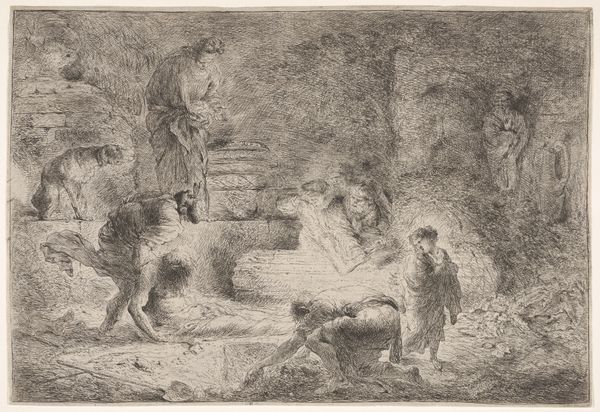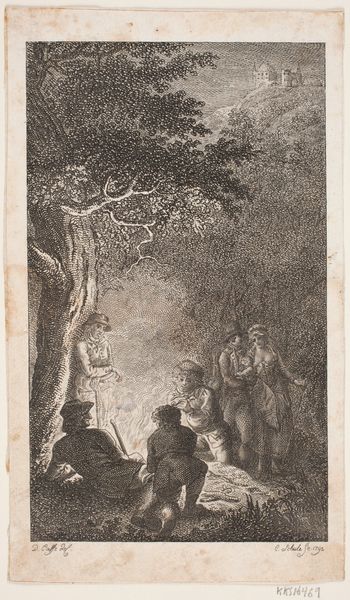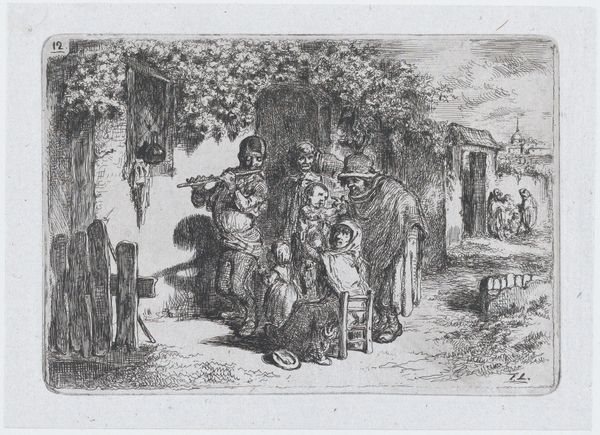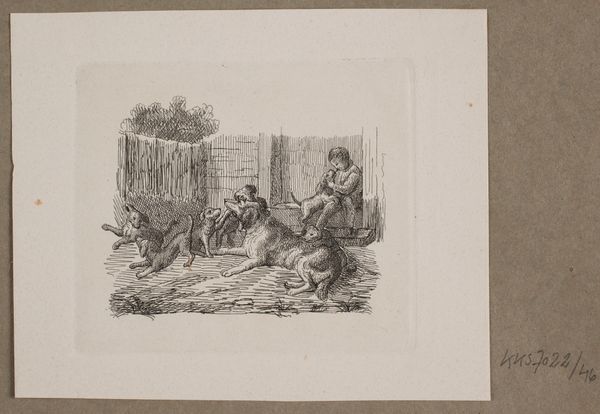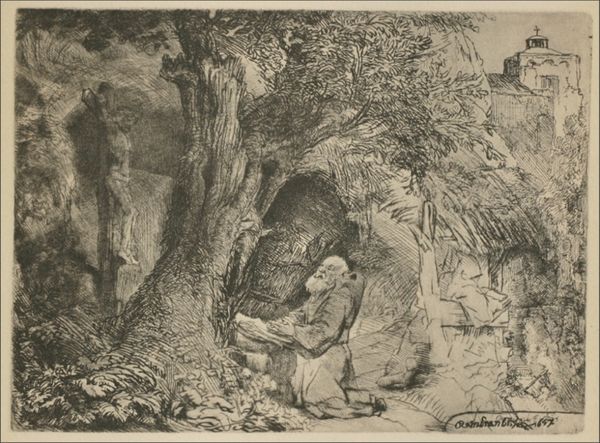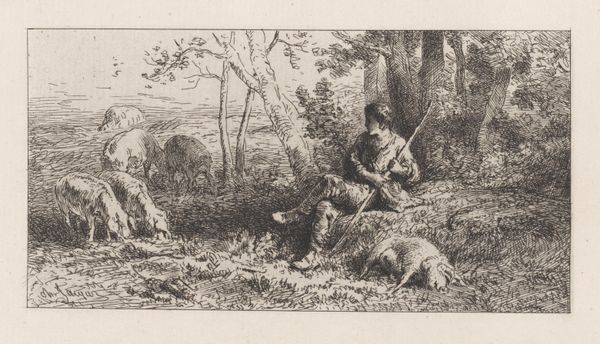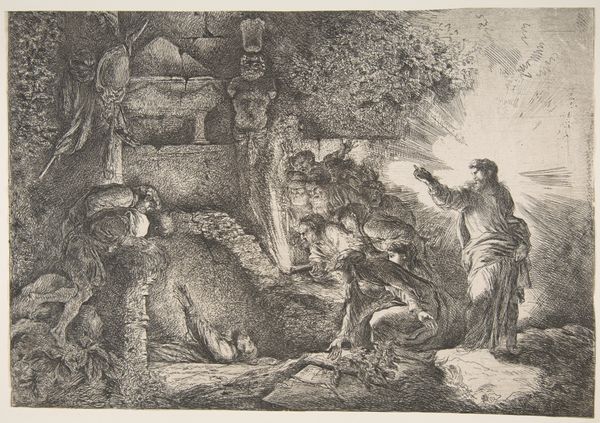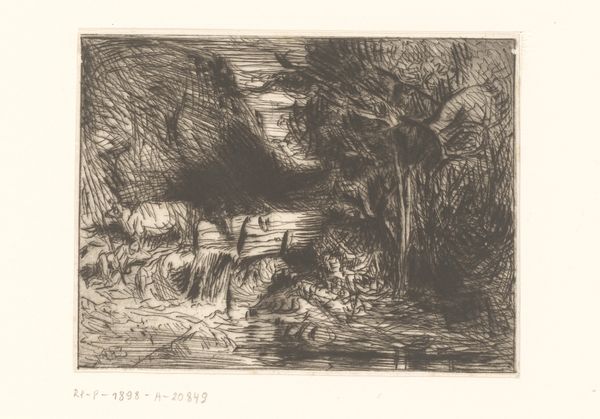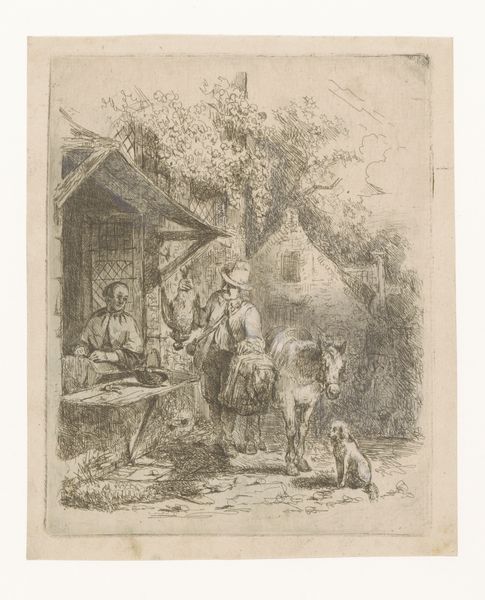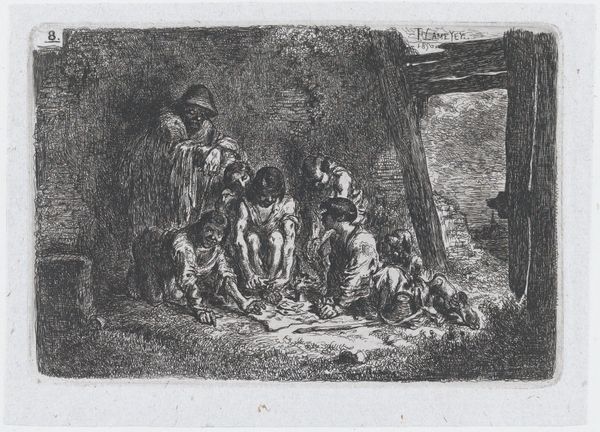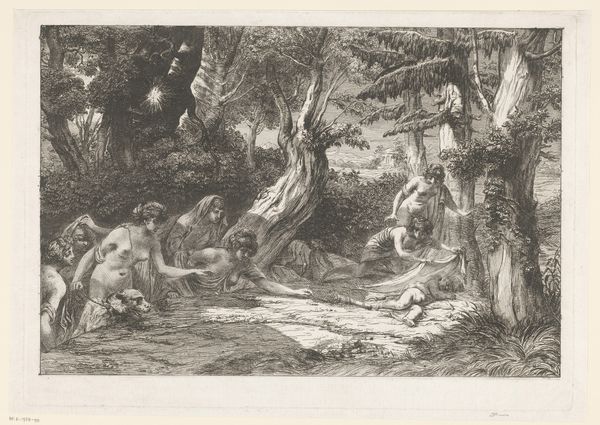
Tobit Burying the Dead c. 1650
0:00
0:00
print, etching
#
narrative-art
#
baroque
#
ink painting
# print
#
etching
#
landscape
#
figuration
Dimensions: 8 1/16 x 11 7/8 in. (20.48 x 30.16 cm) (plate)
Copyright: Public Domain
Curator: Looking at "Tobit Burying the Dead" from around 1650, by Giovanni Benedetto Castiglione, immediately evokes this somber atmosphere... don't you think? Like a shadowy stage. Editor: Absolutely. It’s undeniably poignant. The use of light and shadow crafts an almost palpable sense of grief, like a hushed response to state violence that extends into sacred life, which in this case is burial practice. It's interesting how even with so few visual cues, he stirs these visceral feelings. Curator: Right? The material itself adds to the feeling. It's an etching, a print. Knowing that adds to that ghostly feel, right? It is both reproducible and feels unique at the same time... like this sorrow, unfortunately, isn't just this one moment. Editor: Indeed. And consider how the Baroque aesthetic frequently turned to stories about faith and individual integrity against oppressive power, like that represented here in Tobit. In the biblical Book of Tobit, burying the dead was a subversive act, a silent protest in defiance of tyrannical rule that echoes resistance across eras. It transforms these acts of quiet defiance into visible statements. Curator: You know, when I look at the scene—these figures almost swallowed by darkness— I think about the power of intimate care during monumental turmoil, you know? Each stroke contributes to an immersive world, and the detail invites a kind of personal reckoning. It's like watching the most hushed part of a ritual from very, very far away. Editor: Yes, I completely agree! By intertwining faith, death, and rebellion, Castiglione offers a timeless reflection on our shared humanity in times of inhumanity, revealing how personal morality intertwines with the arc of history and how individuals negotiate the oppressing presence of regimes. Curator: Seeing it this way, the etching feels not just historical but incredibly… pertinent. Almost hauntingly relevant. Editor: Exactly. The layers within it urge us to engage with narratives of oppression and resilience. I walk away seeing not only a masterwork from the past but a stirring mirror held to today's world.
Comments
minneapolisinstituteofart almost 2 years ago
⋮
Few artists could conjure mood from an accumulation of lines as well as Giovanni Benedetto Castiglione. With this etching, he challenged himself to illuminate a nocturnal scene solely by torchlight. According to the apocryphal Book of Tobit, the pious Tobit continued to observe Jewish law, including the proper burial of the dead, even when being held captive in Nineveh. In true baroque fashion, Castiglione emphasized the dramatic reactions of the onlookers, notably that of the woman at right, who cannot resist another backward glance.
Join the conversation
Join millions of artists and users on Artera today and experience the ultimate creative platform.
